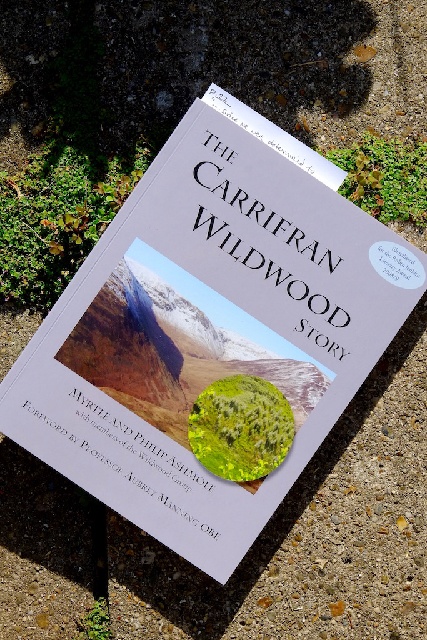From Farrer to the Present Day...
From Farrer to the Present Day...
"Even when grappling with this problem [that individual plants vary], the gardener is sternly confronted by the truth that what suits in Surrey is death in Westmorland; that what serves in Yorkshire loam is fatal in Suffolk sand; that what sunny Sussex favours, Cumberland's rainfall makes deadly..." (Reginald Farrer in his introduction to 'My Rock Garden').
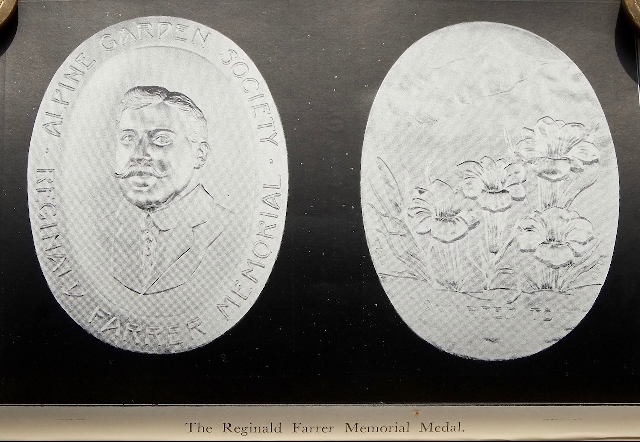
Farrer was the most remarkable person, and certainly the inspiration behind the origins of the Alpine Garden Society - the first Volume of the AGS Bulletin makes extensive reference to him. So now the Farrer Medal celebrates the finest specimens of plants exhibited at the AGS Shows. But Farrer, more than anything else, saw alpines as plants of natural landscapes as well as gardens, and this remains the real strength of the Alpine and Rock Garden Societies - that connection with the natural world beyond the garden, and the way the plants themselves introduce that botanical emphasis into horticulture. For anyone who thinks of plants in this same way - as much more than just commodities to grace the garden - both the Alpine Garden Society and the Scottish Rock Garden Club have really important significance for horticulture in the UK.
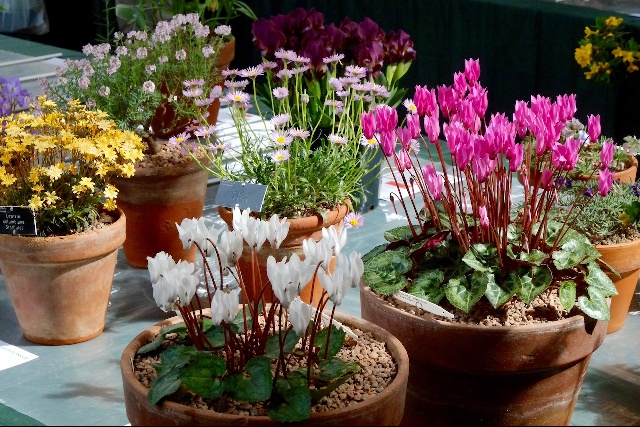
This is by way of an introduction to the various AGS Shows (and other Plant Events) that we have attended this spring and a critique that they are less discovered by a new generation of gardeners, even if at the same time the reason may lie in their seemingly specialist nature. By definition the Shows centre on the exhibition of plants, so how they might change and adapt in outlook into the future is an important question in this new world of the Internet and Social Media.
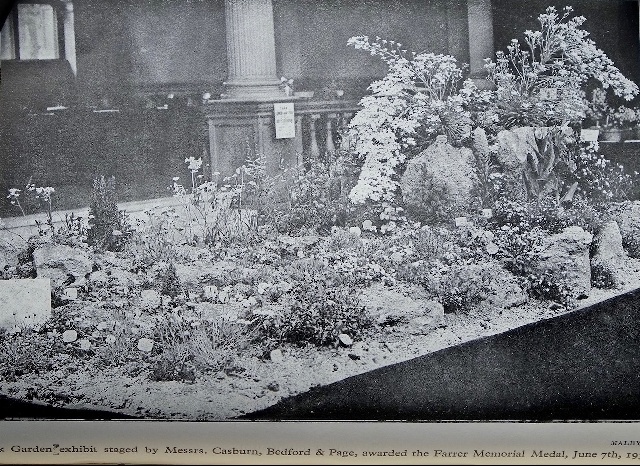
But looking back to that first Volume of the AGS Bulletin shows that in essence the interest and ways of growing the plants was the same then, 90-odd years ago, as it is now. Now as then they are perfect plants for even the smallest of gardens in raised beds and troughs; they vary far more than most gardeners will realise, and different plants can adapt to all of those places and soils that Farrer mentions in that opening quote; and more than anything else it is the detail of these plants that captures the imagination, rather beautifully expressed in several paintings by Farrer that are reproduced in that first Bulletin.
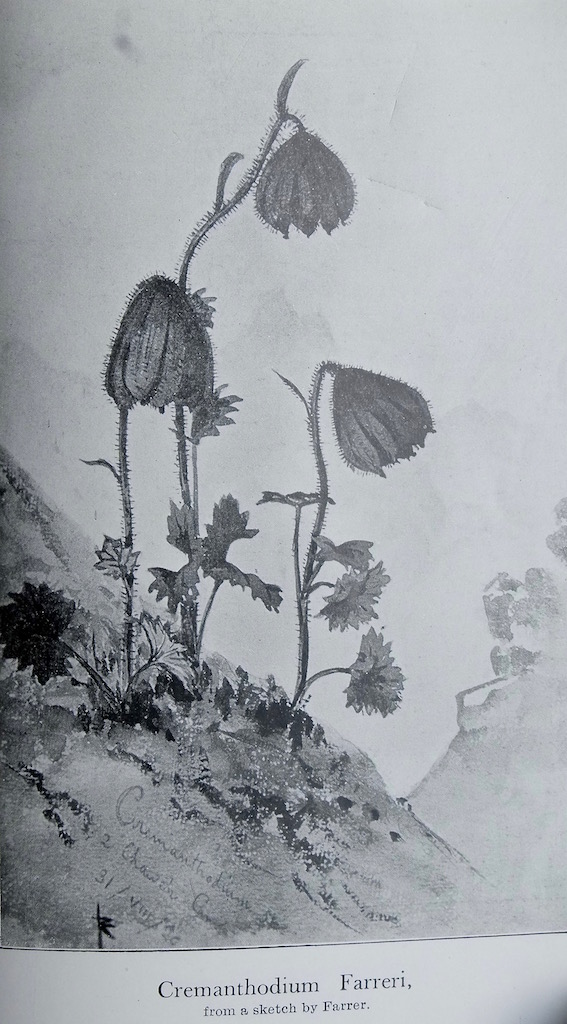
Also pictured then is this very attractive sketch of a landscaped trough which highlights the artistry of alpine gardening (and in many ways its simplicity, which can be lost to erudition and fashion).
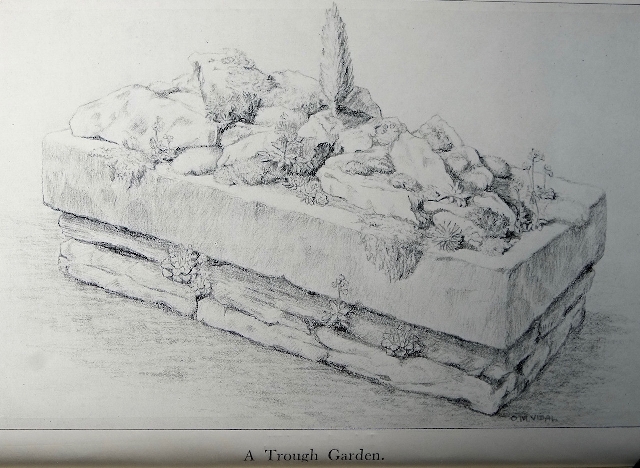
And a drawing that illustrates the crevice-style of planting, so prevalent again in the Czech Republic and now more and more elsewhere, because of how effectively it enables quite choice and difficult plants to be grown successfully.

The plants have not changed and neither have the potential ways of growing them - and perhaps neither that only relatively few gardeners are ever captivated by their charm and appeal - but it is good to renew that enthusiasm that led to the formation of the AGS in 1929, and its significant role in horticulture ever since. These two pictures I have chosen deliberately because they are not at an Alpine Show - they are taken at an event organised by the Plant Fairs Roadshow (https://www.plant-fairs.co.uk/events/) at Telegraph Hill in London, notable for the younger families and children who attended it from the local area: these are the future gardeners of our society in general, and some will be the future members of more specialist garden societies such as the AGS and SRGC.
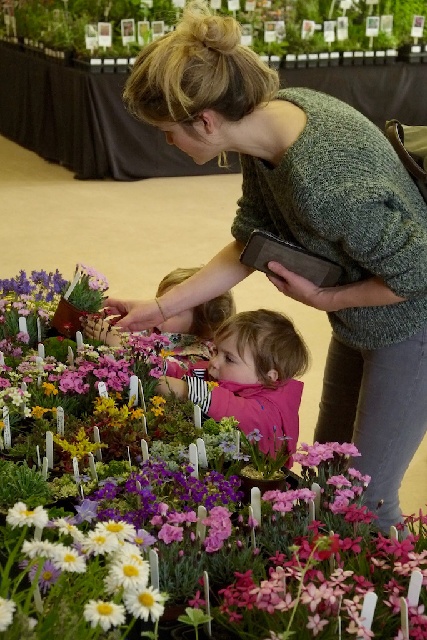
'... hmm... shall I or shan't I? This one or another one? What you can you tell me about this plant? How can I grow it?'
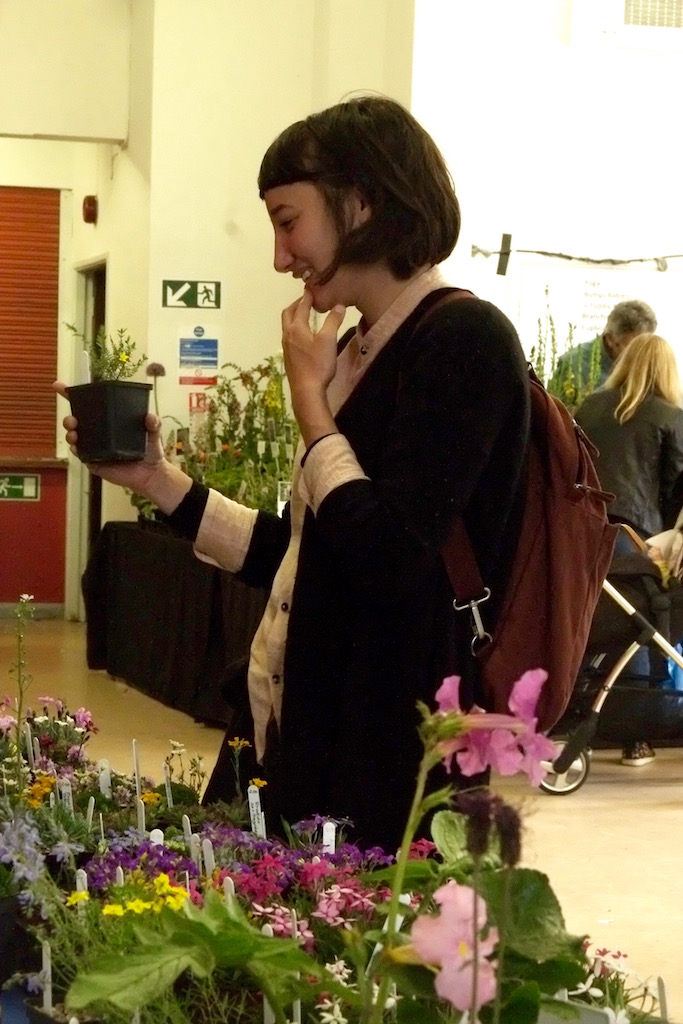
And yet with all this enthusiasm (it hasn't really been lessened by 90 years of alpine gardening; those of us who grow these plants now are just as excited by them as Farrer was and all those people who formed the AGS then), the Alpine Shows and gardening with alpines/rock plants doesn't get noticed and commented on regularly in any real detail and insight by the horticultural media in general. And if you believe in the value of growing these plants - beyond their beauty alone, but for that way they introduce the natural world much more intimately into the garden - this is very disappointing. What I would like to do in this Diary entry is to make more of what goes on at the Alpine Shows and other events we have been to this spring. These are not the much larger and highly promoted Shows held by the RHS and other organisations around the country - though the connection with the RHS is becoming stronger again, as it was nearly a century ago when the AGS was formed, and as I will show in relation to the South-west AGS Show held at Rosemoor Garden on the 1st April; this picture was taken then.

They are different in scale, just as the plants themselves are, more individual in nature and more akin to an Art exhibition than to the 'Garden Centre'.

They attract some of the finest gardeners and nursery-people in the country, but those with a more intimate and botanical perspective on plants (which relates equally to the environment in general and ecological ways of viewing plants). Above all they value plants for their natural rather than man-made diversity, in a world where fashion and short-term values often disregard that fundamental and vital understanding of where plants actually come from, and how they have evolved in concert with the landscapes they grow in.
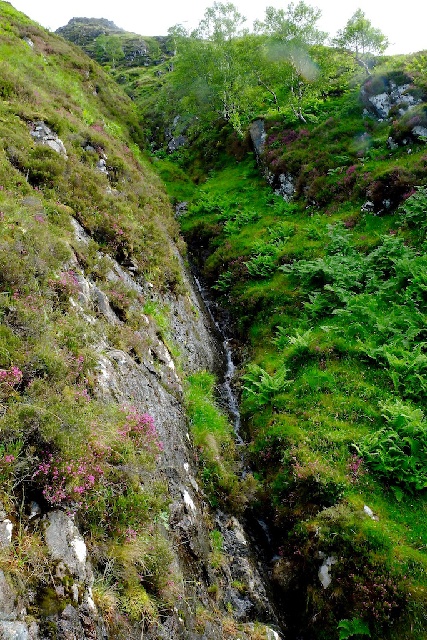
(A natural gully on the climb up Ben Nevis in Scotland).
*****
There are 'Alpine' Shows held all around the country, and that description can belie the fact that the variety of plants they present to gardeners includes many bulbs, woodland species and ferns, and small perennials and shrubs - way beyond what the word 'alpine' alone implies. It is mountain plants that are celebrated at these Shows, but the gardeners who celebrate them are often far more catholic in their tastes, and the range of plants available from the specialist nurseries attending also much more diverse. For many of the people who grow these plants the underlying reason is as much to do with conservation as it is gardening - the way in which the horticultural expertise gained by their cultivation also informs and is informed by the study of their natural habitats. This may seem obvious to any committed gardener but that relationship to the wider environment is not a significant feature within the gardening media or on television, and would benefit greatly from being illustrated more often. This selection of books available at the Easter AGS Show in Kent shows this well.
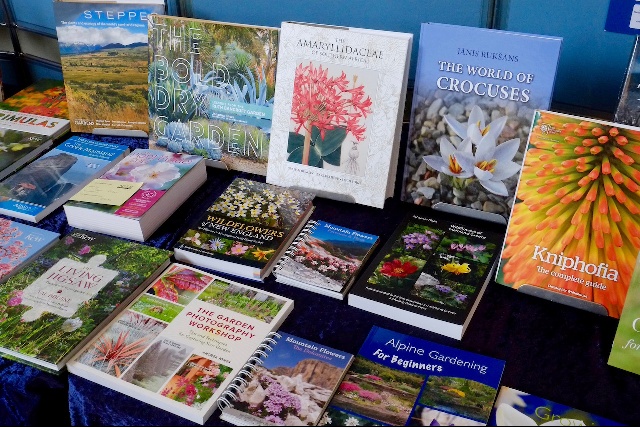
It seems as if these ways of gardening and appreciating plants are in decline - the membership of the alpine and rock garden societies has not become refreshed with significant numbers of new and younger gardeners. And the various reasons to explain why - the pressures of modern life and lack of time and place for a younger generatioon to garden, and the dominance now of the Internet and cyberspace in disseminating information - are curiously at odds with increasing environmental awareness and concerns, the very things that the activity of gardening addresses. There is a place for these more detailed ways of plantsmanship and gaining the insights about plants that are the result. These are more than worth learning at an early age, as well as later in life when more opportunities may arise. And its possible to make a garden in small spaces as well as larger ones, even if a jungle is often preferred over a mountain meadow!

If you have read this far (and thank you if you have), this then is the perspective of a gardener and nurseryman who visits Alpine Shows mostly in the south of the country. The Shows are a consequence of propagating plants and gardening. In themselves they are specialised but the motivations behind them are far more universal.

There are various places I can start describing these events: I could show this picture of Stachys candida grown by Martin and Anna Sheader that won the Farrer Medal just a week or so ago at the 'Rocky Flower Show' in Wimborne, Dorset. This species from hot Greek hillsides http://www.greekflora.gr/el/flowers/0671/Stachys-candida is not an easy plant to grow unless given protection from our wetter maritime climate, but is an introduction to more familiar and valuable garden species such as S. byzantina ('Lamb's Ears'), S. macrantha, and the native 'Wood Betony' S. officinalis ('one of the great 'all-heals' of medieval herbalists': Richard Mabey, 'Flora Britannica').

I could show this wonderful Flower Arrangement made by Paddy Parmee, which illustrates some of the diversity of alpine plants grown in one particular garden, and could well be awarded a Farrer Medal in a different way for gardening with these plants! (and Paddy, as everyone who sees reference to the AGS on the Social Media will know, does a great deal more than just garden with alpines).
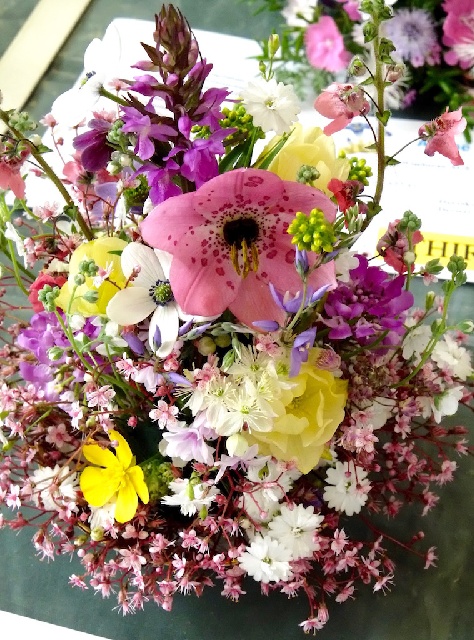

Or I could show this one picture of Dianthus 'Freda Woodliffe' given to us by the plantsman and nurseryman Keith Lever, who named it for the wife of a member of the AGS.
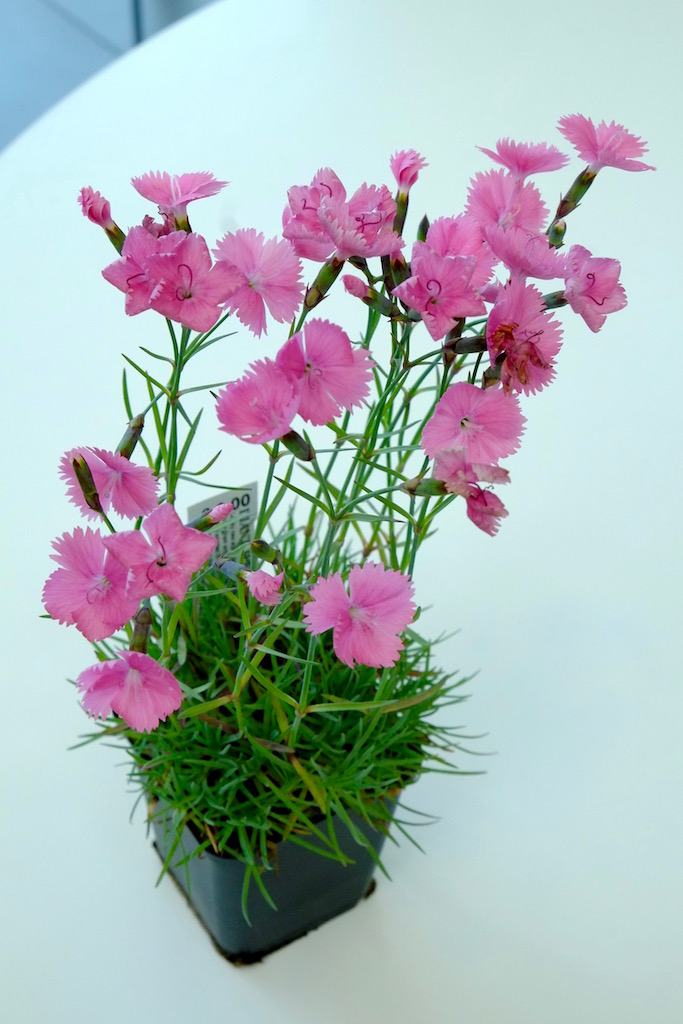

For me, as someone who has propagated plants and made a garden all of my life, this last picture is where I begin because it says what a Society is. Plants hold within them scientific and artistic understanding and appreciation (which we discover as individuals as we study and grow them), but they also make those personal connections between gardeners which are the basis of a Society, and this comes from gardening with them and from the specialist nurseries which grow and maintain such diversity in commercial cultivation. The Shows illustrate and display that diversity but in truth it exists out in the real world and our gardens, not on the showbench, and this is the essential basis of horticulture - the Natural World, and the purpose of a 'flower' to set seed. In his remarkable book 'The Cabaret of Plants' http://richardmabey.co.uk/the-cabaret-of-plants/, Richard Mabey writes that 'the last of the nineteenth-century Romantics, John Ruskin, was appalled by any suggestion that the 'beauty' of flowers existed chiefly to delight insects and assist plant reproduction'. For Ruskin the 'Flower' was the purpose. Richard Mabey finishes his chapter 'On Being Pollinated' by reference to an orchid discovered in 1928 that flowers entirely underground, relying on symbiosis with a mycorrhizal fungus for its nutrition. The world has a great deal more in it than directly meets the eye!
So the Alpine Shows, which I will go on to look at more closely, illustrate the beauty and diversity of plants, and the specialist nurseries which attend them encourage us to grow this diversity in our gardens, and consider the 'seed'. In gardening terms these come together in our views of ecology and environmental conservation, which initiatives such as the Carrifran Project in S.W. Scotland http://www.carrifran.org.uk and the Haweswater Reserve https://www.rspb.org.uk/reserves-and-events/find-a-reserve/reserves-a-z/reserves-by-name/h/haweswater/about.aspx, which the RSPB and now AGS are involved with, address more directly. Here is where the alpine and rock garden societies look to the future.
